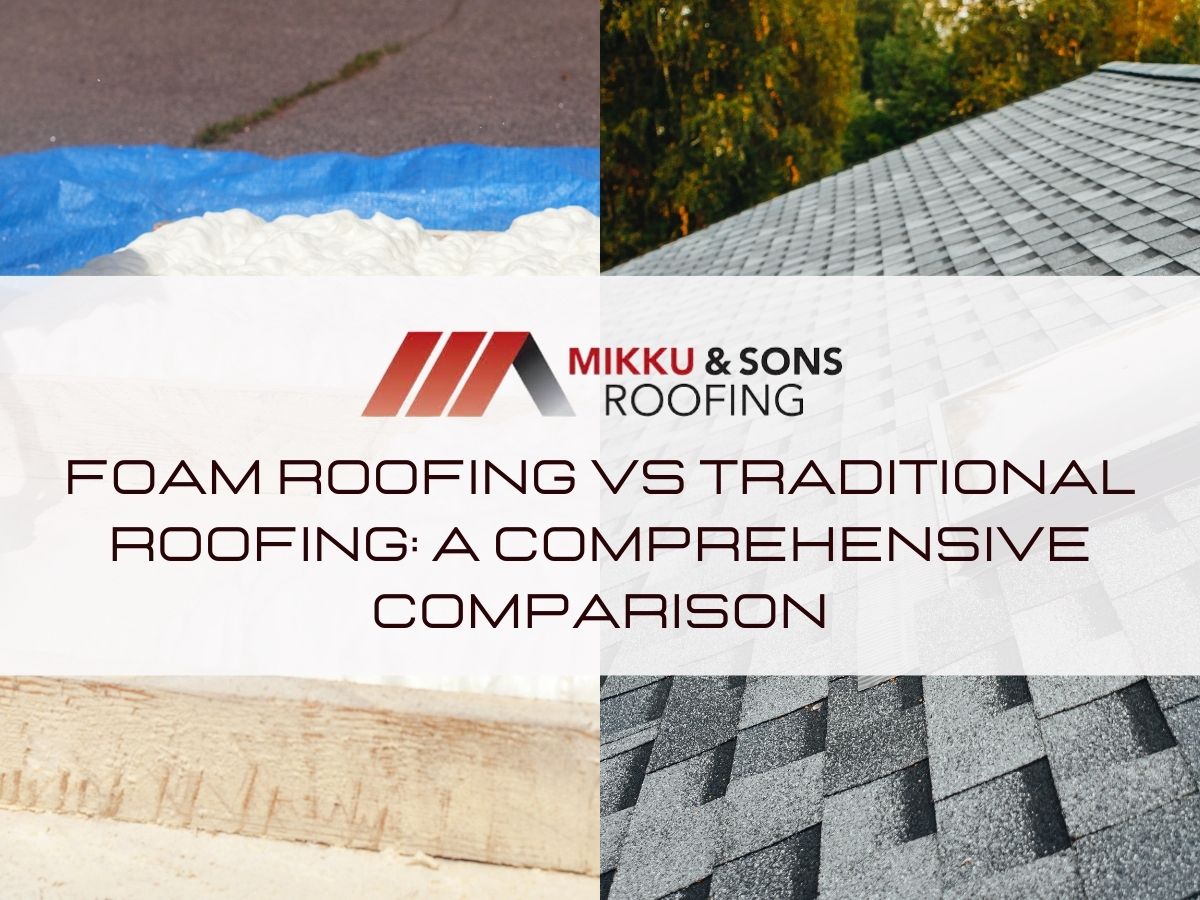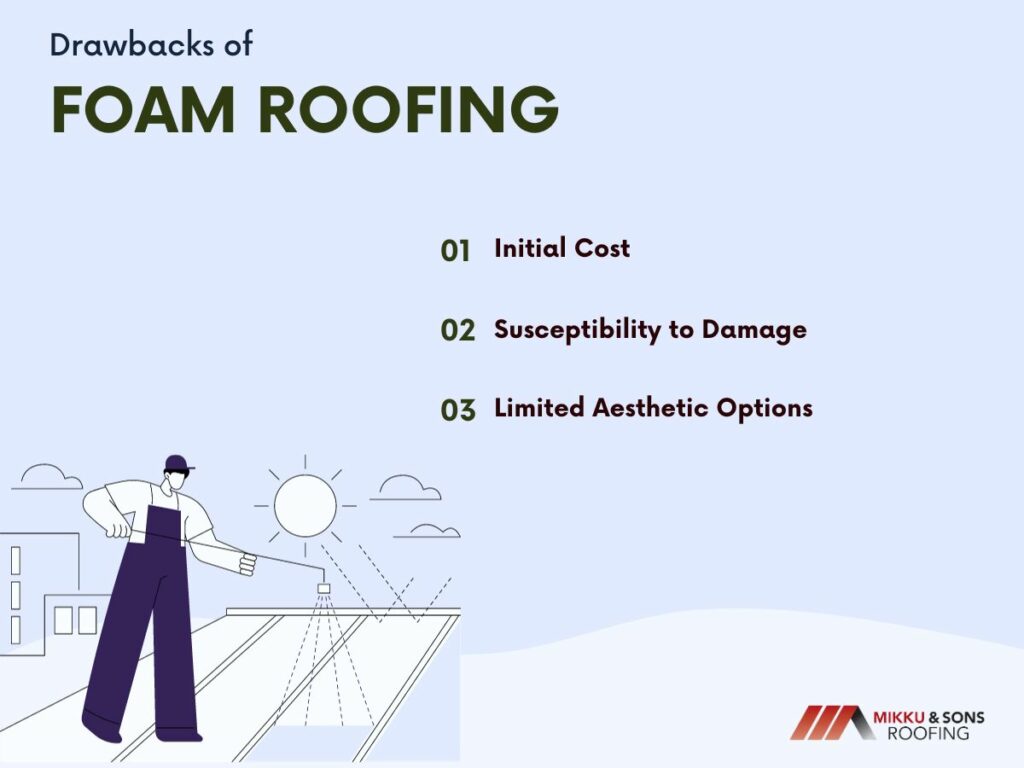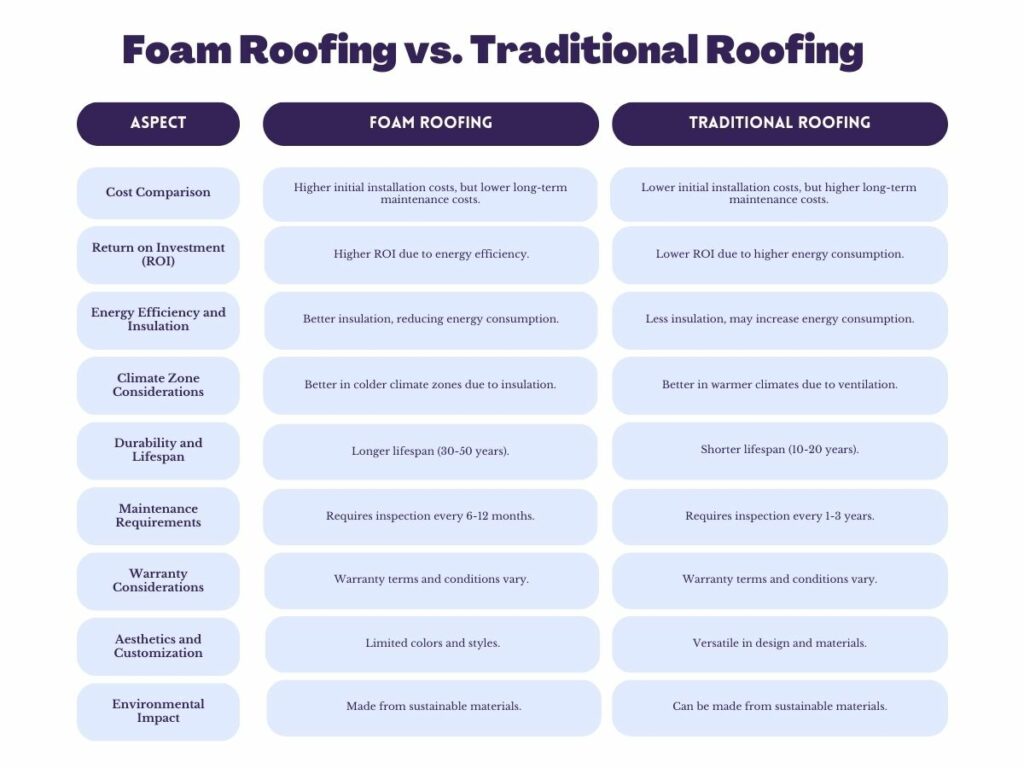

Are you considering a new roof for your home or business? With the numerous options, deciding which one to choose can be overwhelming.
In this blog post, we will compare foam roofing vs traditional roofing. to help you make an informed decision. We will discuss the pros and cons of each type of roofing and help you determine which one is best suited for your needs.
Whether you're looking for a cost-effective or durable solution, we'll cover it all. So, let's dive in and explore the world of roofing options!
When it comes to roofing options, there are many materials to choose from, each with its own set of benefits and drawbacks. Foam roofing is popular for many homeowners and businesses due to its energy efficiency, insulation properties, and lightweight and flexible nature.
However, it also has some drawbacks, such as an initial high cost, susceptibility to damage, and limited aesthetic options.
Foam roofing is made from expanded polystyrene (EPS) or extruded polystyrene foam (XPS). It is lightweight, flexible, and has a seamless and waterproof surface. Foam roofing is available in various thicknesses and can be cut to fit any shape or size of the roof.
A professional roofing contractor typically installs foam roofing. The process involves cutting the foam sheets to fit the roof's shape and size and installing them on the roof deck. The foam sheets are then secured in place with roofing felt and fasteners.

Foam roofing offers a range of advantages that make it an attractive choice for homeowners and businesses looking to improve the efficiency and durability of their roofing systems. Below are some:

While foam roofing offers some benefits, it is important for homeowners and businesses to carefully consider the drawbacks before making a decision. Some roofing applications may have better choices, and other options should be considered. Below are some of the drawbacks:
Foam roofing is a versatile and cost-effective solution that can be used in various applications. However, it is important to consider the specific requirements of the building or structure before selecting foam roofing as the best option.
When it comes to roofing options, traditional roofing materials like asphalt shingles, metal roofing, and tile roofing have been popular choices for decades. These materials offer a range of benefits, including durability, longevity, and aesthetic appeal.
However, they also have drawbacks, such as weight and structural considerations, maintenance requirements, and energy efficiency concerns.
Below are different types of traditional roofing:
Traditional roofing materials offer a timeless appeal and numerous advantages that extend beyond aesthetics. In this discussion, we will explore their application areas and essential considerations, highlighting how they contribute to residential and commercial properties' durability, style, and value.
When it comes to roofing, choosing the right materials and techniques is crucial for both functional and aesthetic reasons. In this discussion, we will explore various application areas and considerations, shedding light on the drawbacks of traditional roofing methods.
When selecting a traditional roofing material, it's crucial to factor in your region's unique climate and environmental conditions. Whether you're contending with relentless winds, heavy snow loads, or high humidity levels, your choice of roofing material should be a tailored response to these challenges.
When roofing your home or building, many options are available. Two popular choices are foam roofing and traditional roofing. While both types of roofing have pros and cons, foam roofing has gained popularity recently due to its energy efficiency, durability, and aesthetic appeal.

When it comes to cost, foam roofing and traditional roofing have some differences. The initial installation costs of foam roofing are generally higher than traditional roofing, but the long-term maintenance costs are lower.
This is because foam roofing is more resistant to damage from weather and pests, requiring less maintenance over time.
For example, the average cost of installing foam roofing is around $10 to $15 per square foot, while the average cost of installing traditional roofing is around $5 to $10 per square foot. However, the average cost of maintaining foam roofing is around $2 to $5 per square foot per year, while the average cost of maintaining traditional roofing is around $5 to $10 per square foot per year.
When it comes to return on investment (ROI), foam roofing has a higher ROI than traditional roofing. This is because foam roofing can save you money on energy bills over time, offsetting the higher initial installation cost.
Foam roofing is a great choice for energy efficiency. It provides better insulation than traditional roofing, which can reduce energy consumption and help your home or building stay warmer in the winter and cooler in the summer.
Foam roofing can also reduce the heat that escapes your home or building, saving you money on energy bills.
Traditional roofing, on the other hand, can allow heat to escape and increase energy consumption. This is because traditional roofing is less well-insulated than foam roofing, which means it can allow heat to escape and increase energy consumption.
The climate zone can affect the energy efficiency of foam roofing and traditional roofing. In colder climate zones, foam roofing can provide better insulation and reduce energy consumption.
Traditional roofing may be a better choice in warmer climates because it can provide better ventilation and reduce the risk of overheating.
Foam roofing has a longer lifespan than traditional roofing. The average lifespan of foam roofing is around 30 to 50 years, while the average lifespan of traditional roofing is around 10 to 20 years.
This is because foam roofing is more resistant to damage from weather and pests, which means it can last longer without needing to be replaced.
Foam and traditional roofing require regular maintenance to ensure they last as long as possible. Foam roofing should be inspected for damage every 6 to 12 months, while traditional roofing should be inspected for damage every 1 to 3 years.
When choosing a roofing material, it's important to consider the warranty. Both foam roofing and traditional roofing come with warranties, but the terms and conditions of the warranty can vary.
It's important to choose a warranty that provides the right level of coverage and understand the terms and conditions of the warranty before making a decision.
Foam roofing has limited aesthetic options compared to traditional roofing. Foam roofing is available in a limited range of colors and styles, making it difficult to match other architectural features.
Traditional roofing, on the other hand, has more versatility in design. It can be made from various materials and designed to match any architectural style.
The materials used in foam roofing and traditional roofing can affect the environmental impact of each type of roofing. Foam roofing is made from more sustainable and environmentally friendly materials than traditional roofing.
However, traditional roofing can be made from more sustainable and environmentally friendly materials than foam roofing.
Foam roofing and traditional roofing have some differences when it comes to energy efficiency, durability, and aesthetic appeal. Foam roofing is a great choice for energy efficiency, durability, and aesthetic appeal, while traditional roofing may be a better choice for certain climate zones or architectural styles.
When choosing a roofing material, it's important to consider factors such as climate, budget, and aesthetics to ensure that your roofing material is right for you.
